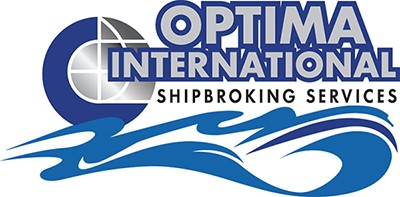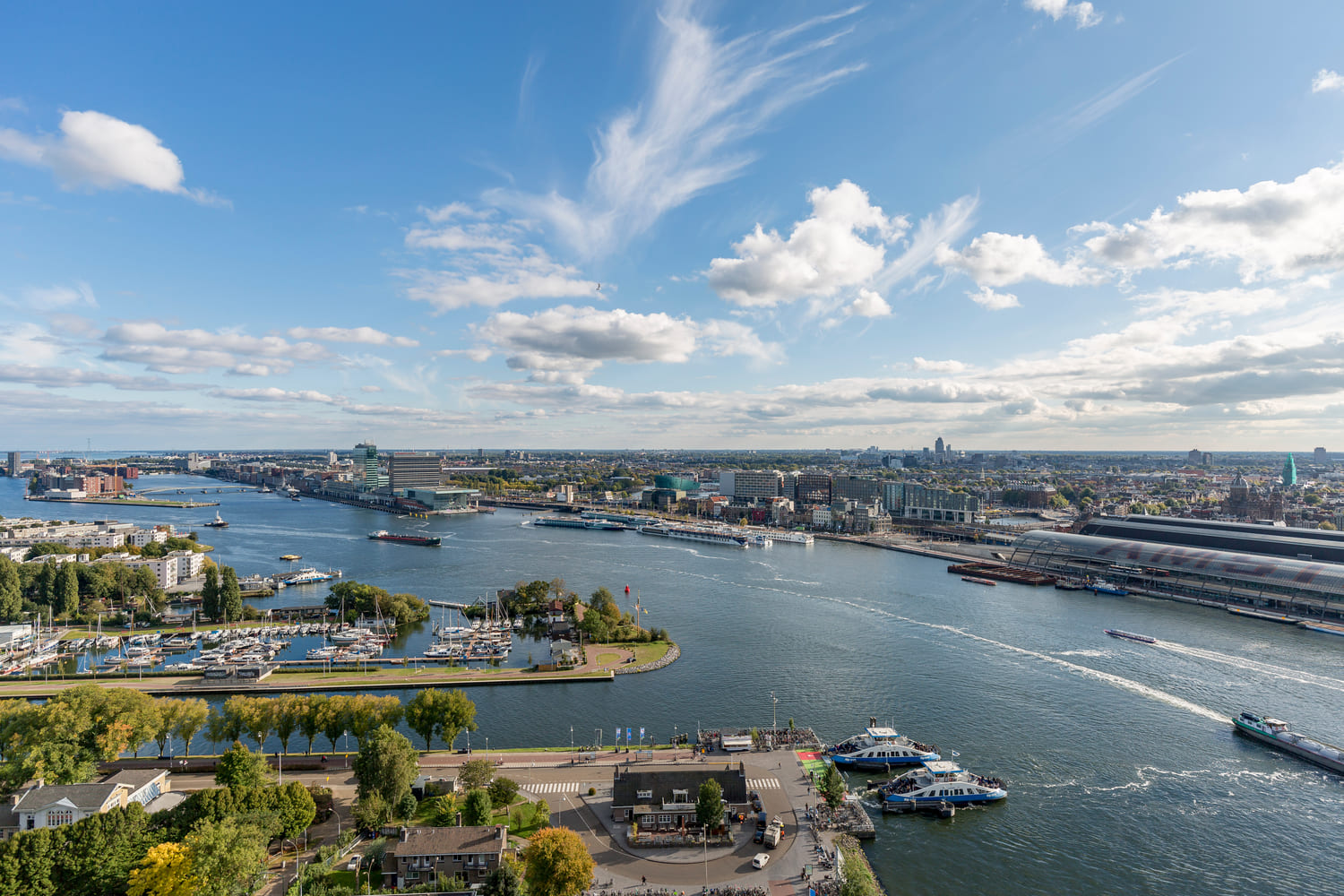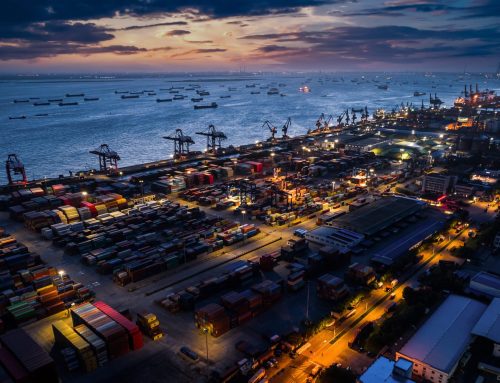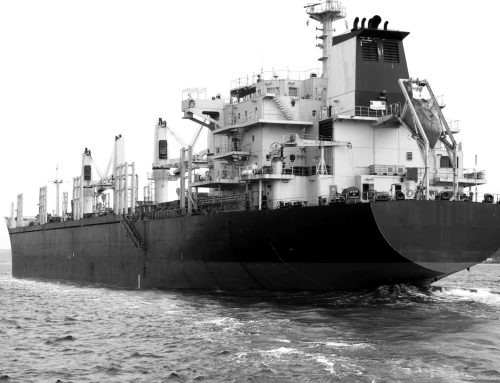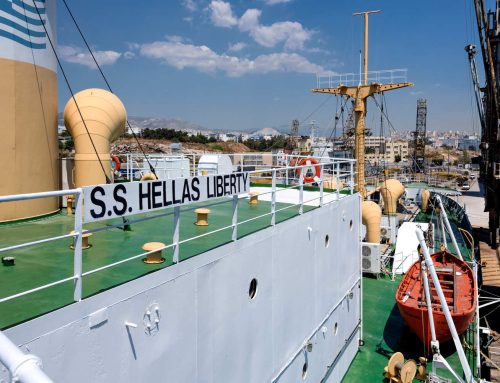From the Middle Ages, the Netherlands became a pivotal region for European maritime trade because of its ideal geographic location between Scandinavia and the Baltic in the North (wood and cereal), and Portugal and the Mediterranean ports in the South (wine and salt). Moreover, the Dutch developed a system of canals based on the large rivers crossing the country, particularly the Rhine and the Meuse. Eventually, every town and village with access to a river or to the coast would have a port, however small, to cater for its fresh or saltwater fishing fleet..
Amsterdam originated as a small fishing village in the 13th century AD. To protect themselves from floods, the early inhabitants had to build dikes on both sides of the river, and about 1270 they built a dam between these dikes.
Even then, merchant ships from Amsterdam sailed as far as the Baltic Sea and laid the foundation of the future trade centre, acting as a link between northern Europe and Flanders (now northern Belgium and northern France). The city was under the jurisdiction of the counts of Holland, one of whom, Count Floris V, granted the homines manentes apud Amestelledamme (“people living near the Amstel dam”) a toll privilege in 1275. This document mentions the name Amsterdam for the first time, though a full charter was not granted until 1306. The city rapidly extended its business, and in 1489, as a sign of gratitude for the support given by the city to the Burgundian-Austrian monarchs, Emperor Maximilian I allowed Amsterdam to adorn its armorial bearings with the imperial crown. By then Holland’s greatest commercial town and port, as well as the granary of the northern Netherlands, Amsterdam had become a centre of wealth and influence in Europe.
Until the end of the reign of Charles V in 1555, when the 17 provinces of the South and North were united under a single government, Antwerp possessed by far the most important port in the Low Countries. However, after the Dutch revolt against Charles V’s successor, Philip II of Spain, and the subsequent conquest of Antwerp by Spanish troops in 1585, more than half of the city’s 100,000 inhabitants, including the merchant community, fled to the north. As a result of both the blockade of Antwerp and the arrival of this rich community, which brought links to an extensive trading
network, the maritime ports of Holland and Zeeland received a major boost. In the course of the 17 th and 18 th centuries, around 15% of the male population of these two provinces worked in the maritime sector, whether in the ports, in long-distance trade, in river navigation or in the navy.
The city that benefitted most from immigration from Antwerp was Amsterdam. Amsterdam became an important hub for trade with the Baltic, Northern Germany, Portugal, Spain, Italy and the Levant. Moreover, Amsterdam experienced an influx of Sephardic Jews from Portugal, bringing commercial links to Portugal’s trading posts in Asia, West Africa, the islands of the Atlantic and Brazil. In the 17th century the tolerant Amsterdam flourished through trade, art and science. In thirty years, the city doubled to 60,000 inhabitants (1570 to 1600). The city’s expansion drew more workers to Amsterdam, who settled in the district called Jordaan. For years, the Jordaan has been a working class district, but nowadays it is a trendy area. Amsterdam was the most important port in the Golden Age, in 1602 founded the Dutch East India Company (VOC) and Amsterdam makes acquaintance with new herbs and spices.
The VOC traded sugar, tobacco, gold and slaves. The history of Amsterdam’s shipping industry is well preserved in the Maritime Museum. Amsterdam has the oldest stock exchange and experienced the first so called “bubble”, the tulips were astronomically expensive at one time, but shortly after this the prices crashed. Science and art benefited from the prosperity of Amsterdam. By the end of the 17th century there were 200,000 people in Amsterdam. After the Golden Age, the population declined rapidly in Amsterdam.
Over time, the merchants of Amsterdam would join the Sephardim in their commercial undertakings outside Europe. In 1602, the merchant communities of several Dutch towns founded, under the leadership of Amsterdam, the Dutch East India Company (Verenigde Oost-Indische Compagnie, VOC), the first maritime and commercial enterprise financed through stocks. In the 18 th century, the VOC became the world’s most powerful company, with a monopoly on trade between Holland and Asia. At its peak, it employed more than 40,000 people and sent around 60 ships a
year to Asia. The Company was composed of six “chambers”—all established in port towns—of which Amsterdam’s was by far the most important insofar as it provided around half of the capital. In 1621, a company organised along the same lines, the West India Company (West-Indische Compagnie, WIC) was granted a monopoly on Atlantic trade. However, this monopoly was far more difficult to maintain than that of the East India Company: boats sailing to southern Europe could easily pursue their voyages to Africa or the Caribbean without being troubled, the WIC possessing too limited a number of warships to enforce a monopoly. On average, trade with West Africa and the Caribbean colonies involved between 200 and 300 ships a year, of which at least half were armed in Amsterdam.
The first major development took place in the later half of 16th century and in the 17th century. The Ooster and Westerdok dikes were built in 1832 and 1834 respectively. Construction of the North Sea Canal in 1876 enabled seafaring vessels to reach the Port of Amsterdam. The first part of the West port was built in early 1930s for a Ford car factory and the first part of the Asiahaven harbour was built at the end of 1970s. The Afrikahaven harbour was opened in 2000. An all weather terminal was opened in 1998 by Waterland Terminal, a multipurpose, stevedoring and terminal operating company. The Passenger Terminal Amsterdam was opened in 1999 and Amsterdam Container Terminal became operational in 2001.
Sources:
www.ship-technology.com
www.ehne.fr
www.britannica.com
